Scaffolding Companies Dalton
Find top Scaffold Services in Dalton
Receive 3 FREE Scaffolding Builders quotes for your project today! Compare profiles, reviews, accreditations, portfolio, etc... and choose the best service.
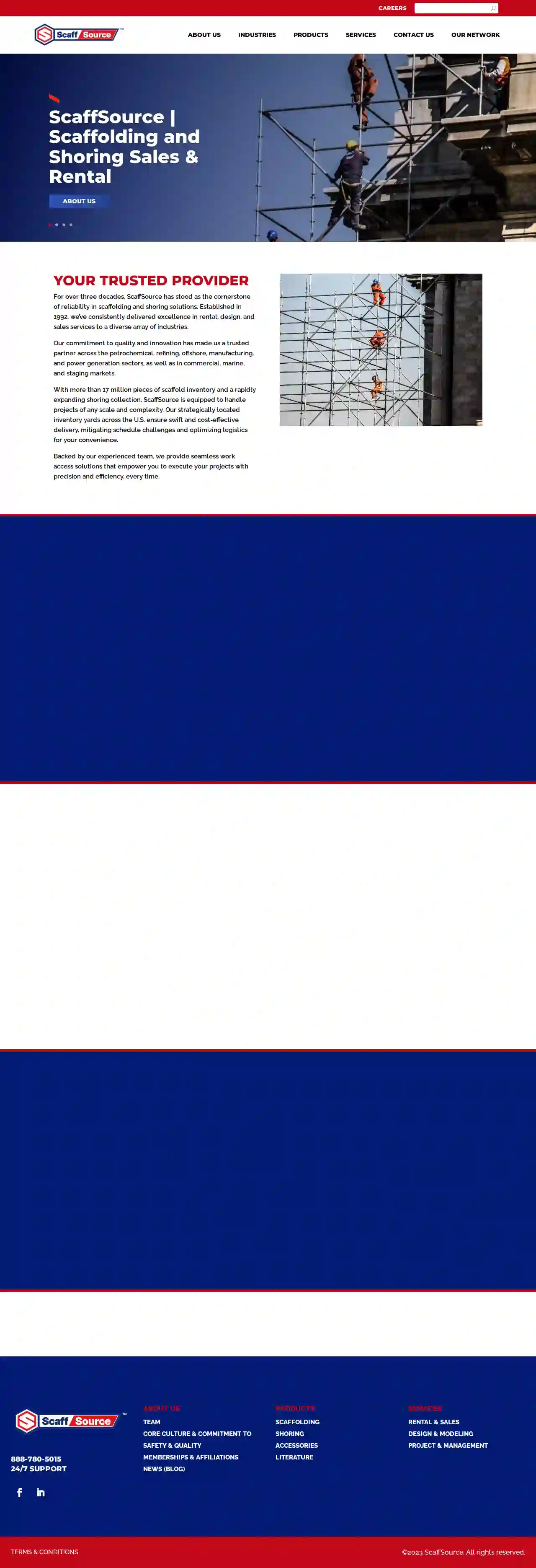
SCAFFSOURCE
51 reviewsAtlanta, USFor over three decades, ScaffSource has stood as the cornerstone of reliability in scaffolding and shoring solutions. Established in 1992, we’ve consistently delivered excellence in rental, design, and sales services to a diverse array of industries. Our commitment to quality and innovation has made us a trusted partner across the petrochemical, refining, offshore, manufacturing, and power generation sectors, as well as in commercial, marine, and staging markets. With more than 17 million pieces of scaffold inventory and a rapidly expanding shoring collection, ScaffSource is equipped to handle projects of any scale and complexity. Our strategically located inventory yards across the U.S. ensure swift and cost-effective delivery, mitigating schedule challenges and optimizing logistics for your convenience. Backed by our experienced team, we provide seamless work access solutions that empower you to execute your projects with precision and efficiency, every time.
- Services
- Why Us?
- Gallery
Get Quote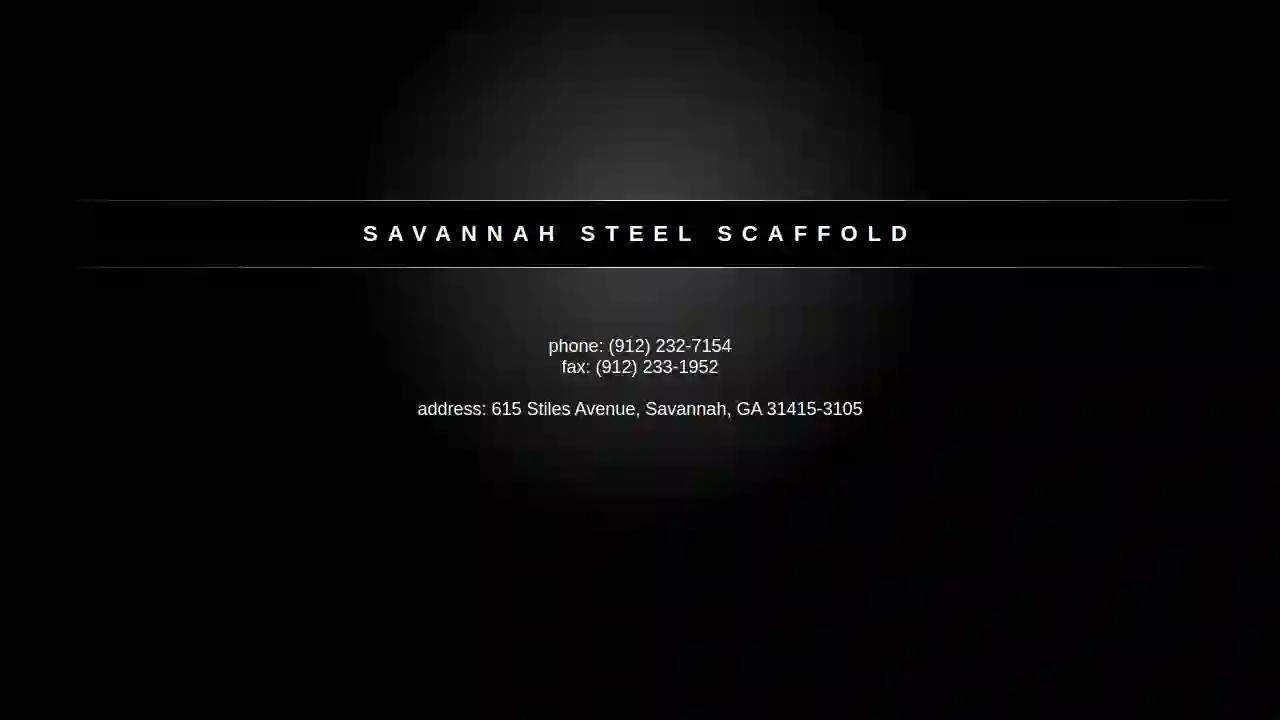
Savannah Steel Scaffold Co Inc
4.817 reviews615 Stiles Avenue, Savannah, 31415-3105, USAt Savannah Steel Scaffold, we pride ourselves on providing top-notch scaffolding solutions to the Savannah community. With over 20 years of experience in the industry, our team of experts has the knowledge and skills to tackle any project, big or small. We're fully accredited and insured, ensuring that you can trust us to get the job done safely and efficiently. Whether you're a contractor, builder, or homeowner, we've got you covered. Contact us today to learn more about our services and how we can help you achieve your goals.
- Services
- Why Us?
- Accreditations
Get Quote
SCAFFSOURCE
Columbus, USScaffSource is a premier provider of scaffolding and shoring equipment sales and rentals, serving various industries since 1992. With over 17 million pieces of scaffold inventory and a growing shoring collection, we deliver excellence in rental, design, and sales services. Our strategically located inventory yards across the U.S. ensure swift and cost-effective delivery, mitigating schedule challenges and optimizing logistics for your convenience. Our commitment to quality and innovation has made us a trusted partner across the petrochemical, refining, offshore, manufacturing, and power generation sectors, as well as in commercial, marine, and staging markets. We provide seamless work access solutions that empower you to execute your projects with precision and efficiency, every time.
- Services
- Why Us?
- Accreditations
- Gallery
Get Quote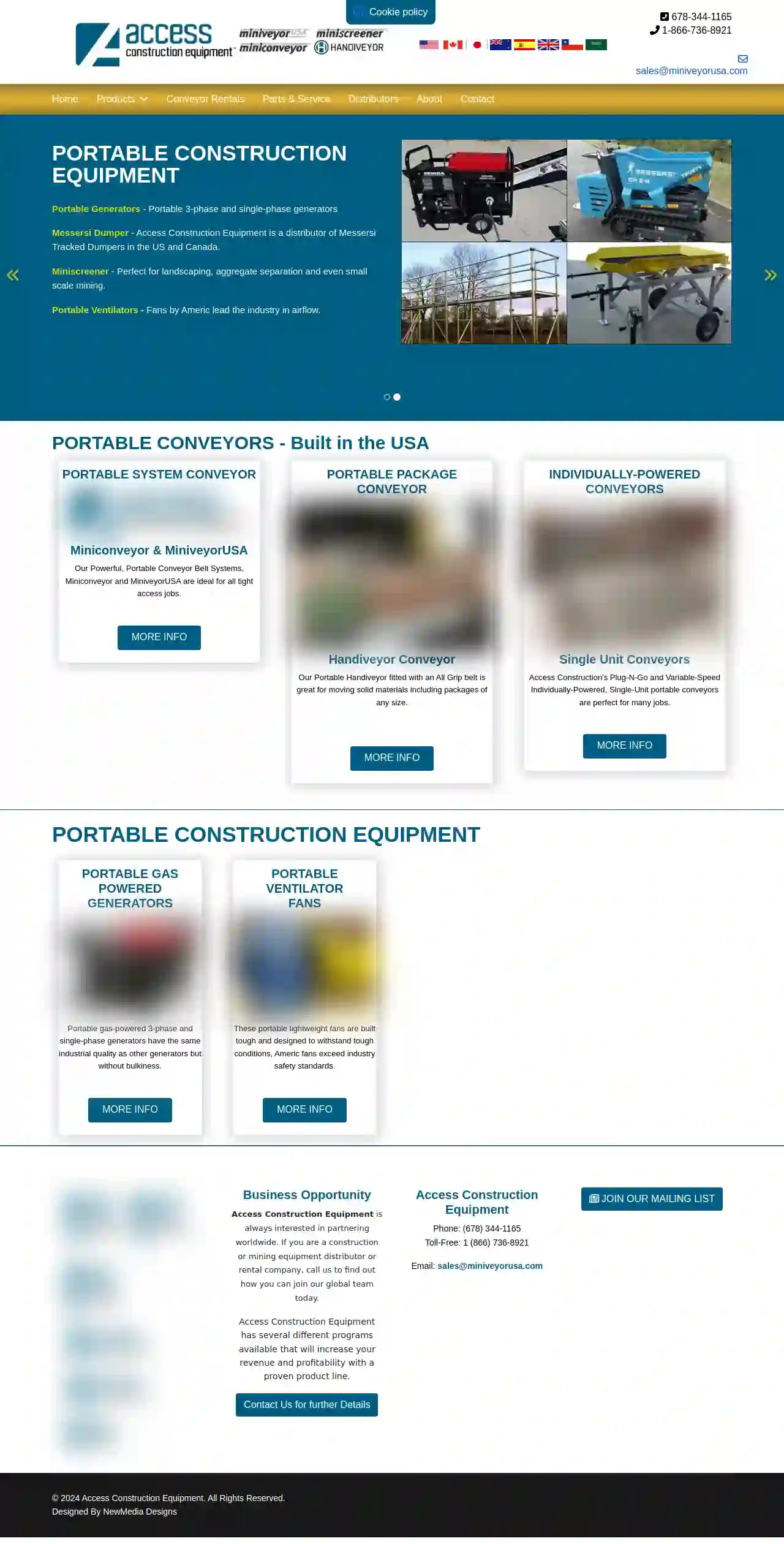
SCAFFOLDING PLATFORMS USA
Stone Mountain, GA, 1980 Parker Court, Ste C, 30087, USScaffolding Platforms USA is a distributor of the LOBO Advanced Platform System, providing a range of products including Work Platform System, Towerstore, Hop Up Platform, Portable Lifting Equipment, Tool Tray, Ladder Guard, and LOBO Gate. The company serves various industries such as Boeing Company, The Walt Disney Company, General Motors, Miller Coors, NASA, and Valero Energy Oil Refinery, among others. With over 15 years in business, Scaffolding Platforms USA is fully accredited and insured, offering a team of experienced professionals dedicated to providing top-quality services and products.
- Services
- Why Us?
- Accreditations
- Gallery
Get Quote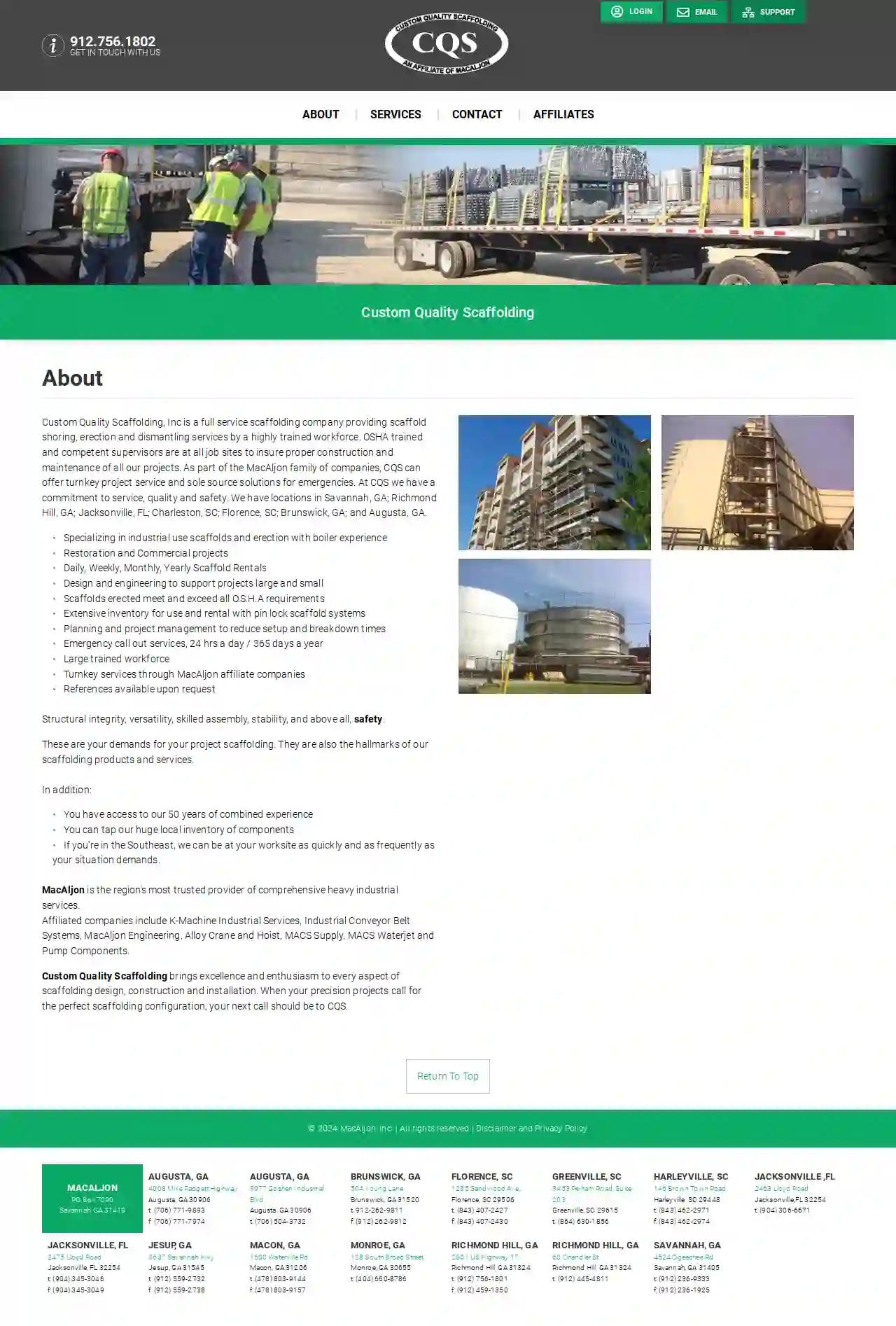
Custom quality scaffolding
52 reviewsP.O. Box 7090, Savannah, 31418, USAt MacAljon, we're a family of companies dedicated to providing comprehensive heavy industrial services. Our team at Custom Quality Scaffolding brings excellence and enthusiasm to every aspect of scaffolding design, construction, and installation. With over 50 years of combined experience, we offer turnkey project services and sole source solutions for emergencies. Our commitment to service, quality, and safety is unwavering. We have locations in Savannah, GA; Richmond Hill, GA; Jacksonville, FL; Charleston, SC; Florence, SC; Brunswick, GA; and Augusta, GA. Our services include scaffold shoring, erection, and dismantling, as well as daily, weekly, monthly, and yearly scaffold rentals. We also offer design and engineering to support projects large and small, and our scaffolds are erected to meet and exceed all O.S.H.A requirements. With a large trained workforce and extensive inventory for use and rental, we're equipped to handle any project. Whether you're in the Southeast or beyond, we can be at your worksite as quickly and as frequently as your situation demands.
- Services
- Why Us?
- Accreditations
- Our Team
- Testimonials
- Gallery
Get Quote
AXIOS Industrial Group - Augusta
42 reviews10077 Grogans Mill Rd, Suite 450, The Woodlands, 77380, USAXIOS Industrial is a leading provider of industrial services, including scaffolding, insulation, coatings, and specialty solutions. With a proven track record of safely providing solutions for turnarounds, capital projects, and routine maintenance, AXIOS is committed to delivering on-time, on-budget results with an uncompromised commitment to workplace health. Our team of experts uses innovative technology to optimize cost, schedule, and quality within the overall project scope. Partner with AXIOS for single-point accountability, unparalleled reliability, lower costs, and maximum value.
- Services
- Why Us?
- Accreditations
- Gallery
Get Quote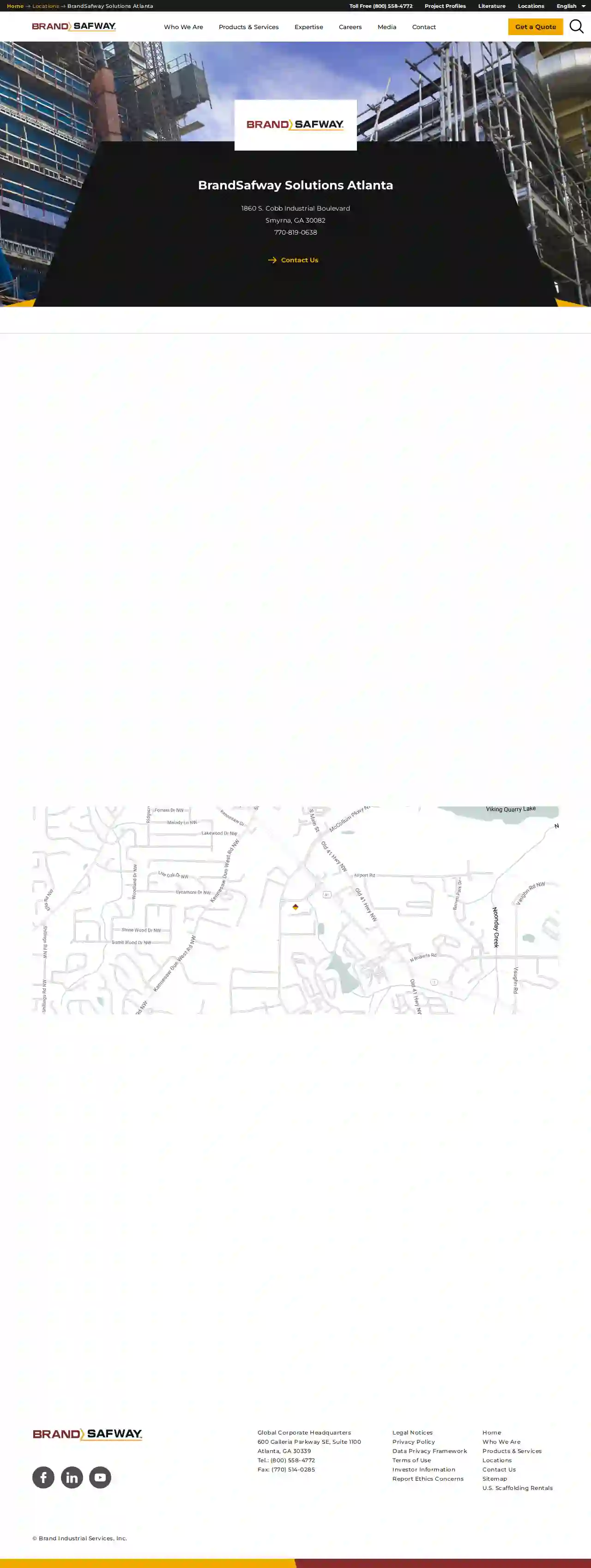
BrandSafway Solutions Atlanta
3.85 reviews3555 Clairmont Rd, Atlanta, 30349, USBrandSafway is a leading provider of access solutions and industrial services in Atlanta, Georgia. With a strong commitment to safety, quality, and customer satisfaction, we offer a wide range of services to support our clients' projects. From scaffolding and hoisting to insulation and coatings, our team of experts is dedicated to delivering innovative solutions that meet the unique needs of each project. At BrandSafway, we pride ourselves on our ability to provide customized solutions that meet the specific requirements of each project. Our team of experienced professionals works closely with clients to understand their needs and develop tailored solutions that ensure successful project outcomes. With a strong focus on safety, quality, and customer satisfaction, we strive to build long-term relationships with our clients and deliver exceptional results.
- Services
- Why Us?
- Accreditations
- Our Team
- Testimonials
Get Quote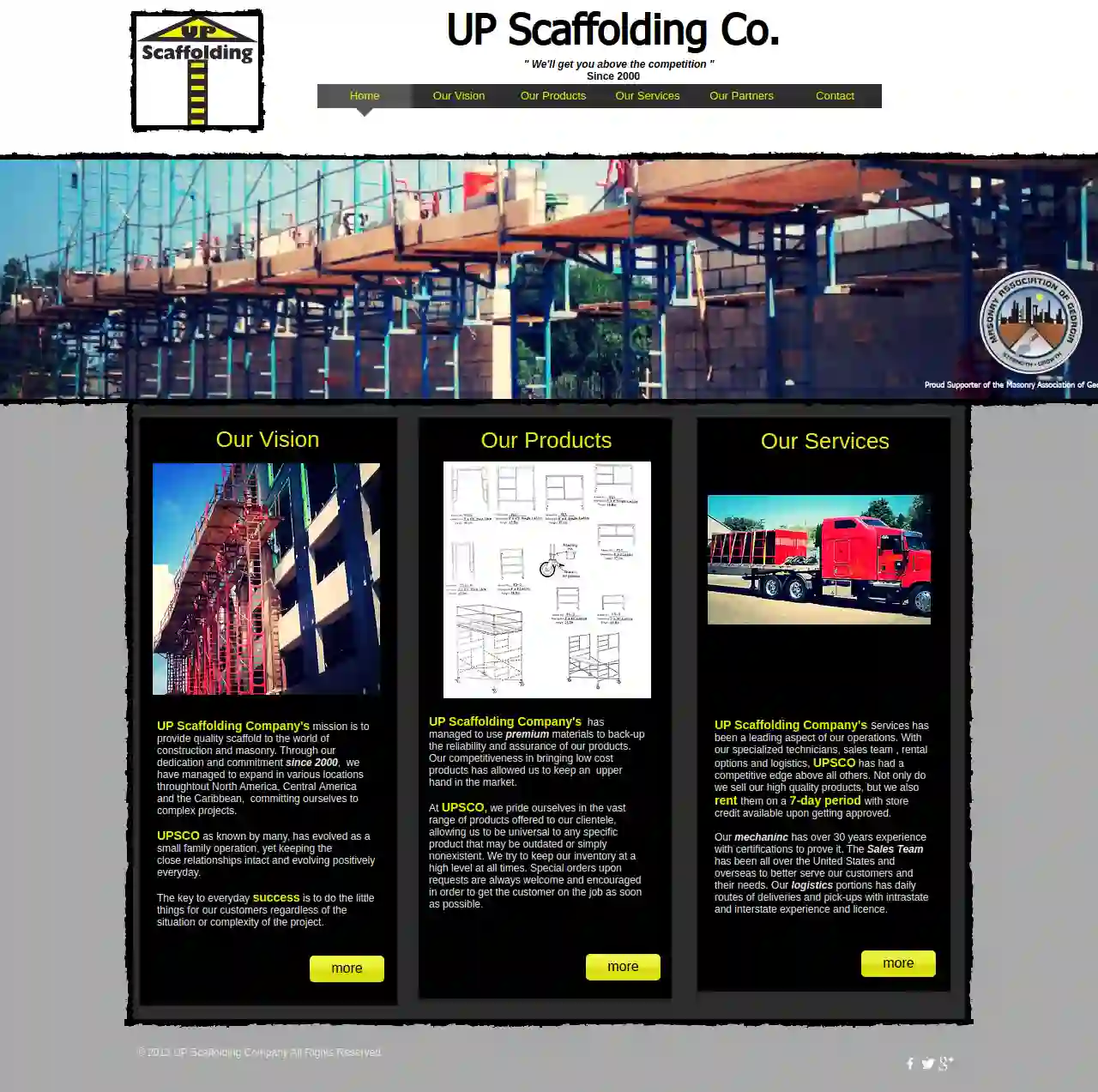
UP Scaffolding Co.
4.224 reviews123 Main St, Norcross, 30092, USUP Scaffolding Company is a leading provider of high-quality scaffolding solutions for the construction and masonry industries. Since 2000, we have been committed to delivering exceptional products and services to our customers. Our mission is to provide reliable and affordable scaffolding solutions that meet the unique needs of our clients. We take pride in our extensive range of products, which are designed to meet the demands of complex projects. Our team of experienced technicians, sales professionals, and logistics experts work together to ensure that our customers receive the best possible service. We offer rental options, store credit, and daily delivery and pickup routes to make it easy for our customers to get the scaffolding they need. At UP Scaffolding Company, we are dedicated to building long-term relationships with our customers. We believe in doing the little things that make a big difference, and we are committed to providing exceptional customer service every day.
- Services
- Why Us?
- Accreditations
- Gallery
Get Quote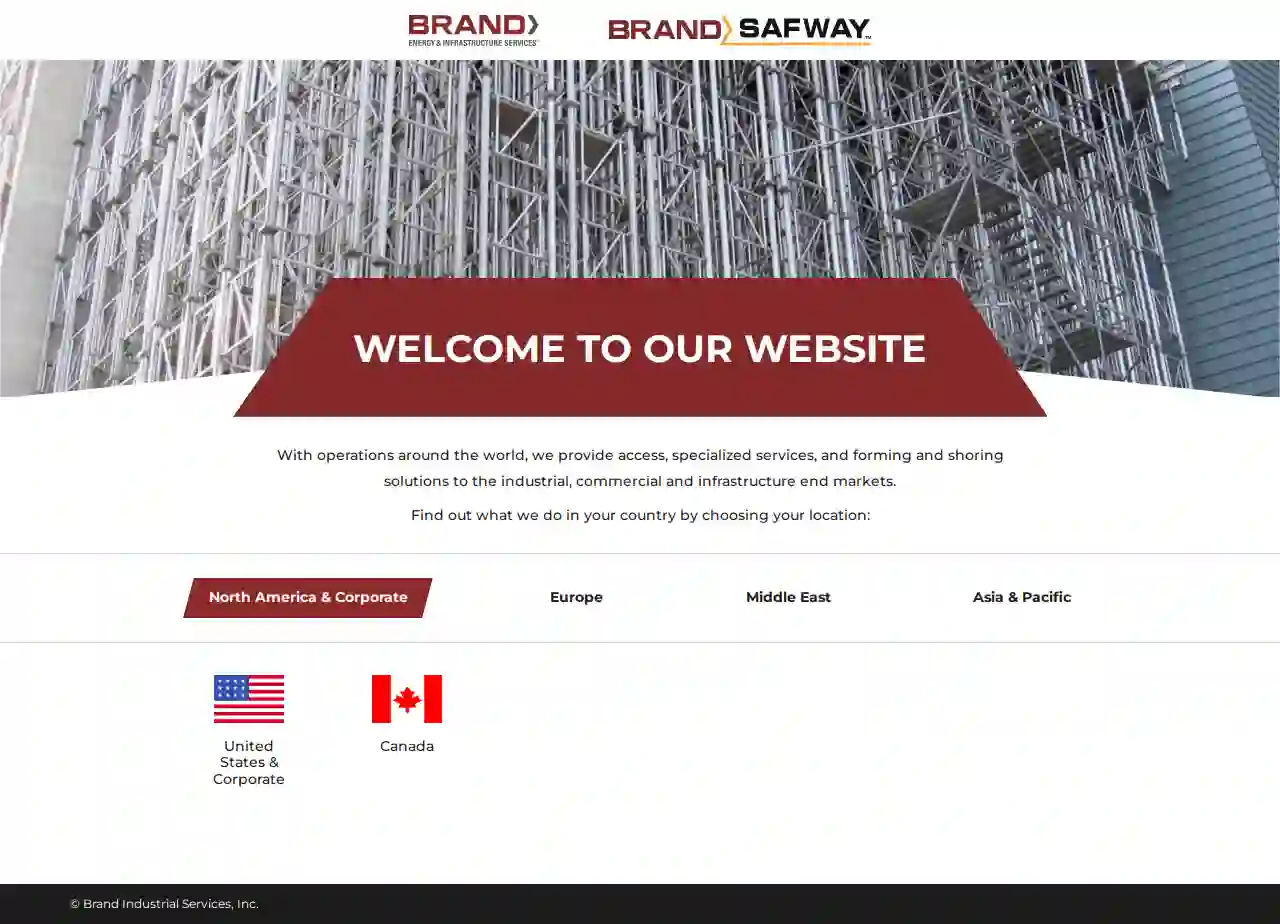
Brand Energy and Infrastructure Services
Augusta, USWelcome to our website. With operations around the world, we provide access, specialized services, and forming and shoring solutions to the industrial, commercial and infrastructure end markets. Find out what we do in your country by choosing your location: North America & Corporate, Europe, Middle East, Asia & Pacific, United States & Corporate, Canada, Belgium, France, Germany, Netherlands, Romania, U.K., Saudi Arabia, United Arab Emirates, Australia, India. © Brand Industrial Services, Inc.
- Services
- Why Us?
- Gallery
Get Quote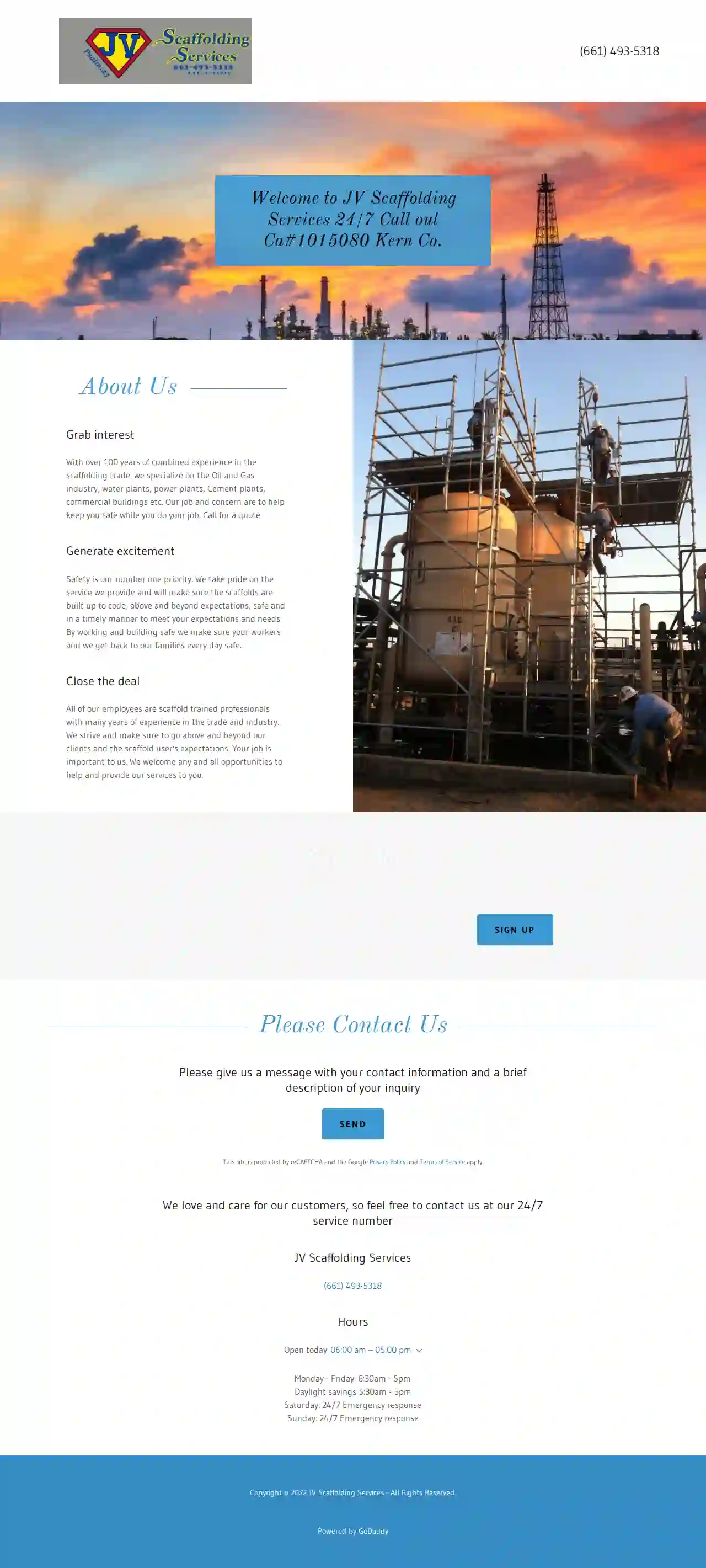
JV Scaffolding Services 24/7 emergency calls
51 reviewsBakersfield, USWelcome to JV Scaffolding Services, your trusted partner for scaffolding solutions in the Oil and Gas industry, water plants, power plants, Cement plants, and commercial buildings. With over 100 years of combined experience in the scaffolding trade, our team of scaffold trained professionals is dedicated to providing safe and reliable services that meet your expectations and needs. At JV Scaffolding Services, safety is our top priority. We take pride in our work and ensure that all scaffolds are built up to code, above and beyond expectations, and in a timely manner. Our goal is to help you complete your project safely and efficiently, so you can get back to your family every day.
- Services
- Why Us?
- Gallery
Get Quote
Over 2,353+ Scaffolding Companies on our platform
Our scaffolding experts operate in Dalton & surroundings!
ScaffoldingHQ has curated and vetted the Best Scaffolding Companies near Dalton. Find a reliable pro today.
Frequently Asked Questions About Scaffolding Companies
- Communicate with the Scaffolding Company: Clearly express your concerns about potential damage to landscaping, structures, or utilities.
- Clear the Area: Remove any valuable or fragile items from the work zone.
- Protect Landscaping: Cover plants, shrubs, and lawns with tarps or protective sheeting.
- Mark Underground Utilities: Ensure underground utilities (water lines, electrical cables) are marked and avoided during installation.
- Supervision: If possible, be present during erection and dismantling to monitor the process.
- Project Size and Complexity: The height, configuration, and accessibility of the scaffolding will influence the amount of materials and labor required.
- Scaffolding Type: Different scaffolding systems (tube and clamp, system scaffolding, suspended scaffolding) have varying costs.
- Duration of Rental: The length of time you need the scaffolding will affect the overall rental price.
- Location: Labor costs and material availability can differ based on your location.
- Additional Services: Some companies may offer additional services like erection, dismantling, or transportation, which can add to the cost.
- Project Height and Access: The height of the structure and the accessibility of the working area are primary considerations.
- Load Capacity: The weight of workers, materials, and equipment that the scaffolding needs to support.
- Project Complexity and Shape: The shape and complexity of the structure may necessitate specialized scaffolding configurations.
- Ground Conditions: The type of ground (soft, uneven, sloping) will influence the scaffolding foundation and support requirements.
- Duration of Use: The length of time the scaffolding will be needed can impact the choice of system.
- Budget: Different scaffolding types have varying costs.
- Steel: The most common material due to its strength, durability, and resistance to corrosion.
- Aluminum: Lighter than steel, often used for smaller projects or where weight is a concern.
- Timber: Used for decking platforms and some traditional scaffolding structures. It's less common now due to its susceptibility to rot and damage.
- Fiberglass: Used in specialized applications where electrical conductivity is a concern.
How do I protect my property from damage during scaffolding erection and dismantling?
How much does scaffolding cost to rent in the USA?
How do I choose the right type of scaffolding for my project?
What are some common materials used in scaffolding?
How do I protect my property from damage during scaffolding erection and dismantling?
- Communicate with the Scaffolding Company: Clearly express your concerns about potential damage to landscaping, structures, or utilities.
- Clear the Area: Remove any valuable or fragile items from the work zone.
- Protect Landscaping: Cover plants, shrubs, and lawns with tarps or protective sheeting.
- Mark Underground Utilities: Ensure underground utilities (water lines, electrical cables) are marked and avoided during installation.
- Supervision: If possible, be present during erection and dismantling to monitor the process.
How much does scaffolding cost to hire in the USA?
- Project Size and Complexity: The height, configuration, and accessibility of the scaffolding will influence the amount of materials and labor required.
- Scaffolding Type: Different scaffolding systems (tube and clamp, system scaffolding, suspended scaffolding) have varying costs.
- Duration of Rental: The length of time you need the scaffolding will affect the overall rental price.
- Location: Labor costs and material availability can differ based on your location.
- Additional Services: Some companies may offer additional services like erection, dismantling, or transportation, which can add to the cost.
How do I choose the right type of scaffolding for my project?
- Project Height and Access: The height of the structure and the accessibility of the working area are primary considerations.
- Load Capacity: The weight of workers, materials, and equipment that the scaffolding needs to support.
- Project Complexity and Shape: The shape and complexity of the structure may necessitate specialized scaffolding configurations.
- Ground Conditions: The type of ground (soft, uneven, sloping) will influence the scaffolding foundation and support requirements.
- Duration of Use: The length of time the scaffolding will be needed can impact the choice of system.
- Budget: Different scaffolding types have varying costs.
What are some common materials used in scaffolding?
- Steel: The most common material due to its strength, durability, and resistance to corrosion.
- Aluminum: Lighter than steel, often used for smaller projects or where weight is a concern.
- Timber: Used for decking platforms and some traditional scaffolding structures. It's less common now due to its susceptibility to rot and damage.
- Fiberglass: Used in specialized applications where electrical conductivity is a concern.